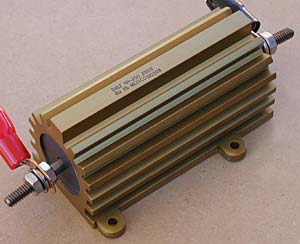Andrew, from Canberra, writes to me:
I refer to your article on the Hitachi DZ-MV580E video camera.
I always like to read the Techno write-ups featured in The Guide [in the Canberra Times] each week. I think they are very worthwhile.
However, I was a little concerned with a misleading paragraph which talks about MPEG2, i.e.
‘Instead of the DV format used on tape-based cameras, this Hitachi model uses the higher quality MPEG2 format used on DVDs.’
I would hate the general public to pick up on this statement. It is very misleading. I think the public should be made aware of the facts about MPEG2 as used on DVDs. Basically, MPEG2 is a compressed format which throws away data and image quality so that the video files will fit on a DVD. Although MPEG2 compression remains very high quality, it is a delivery format and not an editing format. It is inferior to the DV format used on tape-based cameras because of the higher compression and amount of image data discarded and the difficulties in editing MPEG recorded material.
You probably know all this already, but readers will certainly be misled if they are told otherwise.
I wrote back to him:
Thanks for your thoughts on this. I agree with you completely that DV is much better for editing, if only because it can be cut accurately at a precise frame without having to be re-encoded. This is a big weakness with MPEG2 but, as you say, MPEG2 was never intended as an editing format. It’s really only the convenience of optical disc media that has forced MPEG2 into this mould — via DVD cameras and consumer-level DVD recorders.
Anyway, you have prompted me to learn more about DV (digital video cameras aren’t actually my speciality, but after the reading I’ve just done they are starting to come into, er, focus.) I suspect that my throw-away adjective — ‘higher quality’ — was in appropriate.
Is DV better quality than MPEG2 (as implemented on DVD), or vice versa?
On the face of it, DV seems better. A fixed video data rate of 25Mbps for DV, vs a variable data of typically between 4 and 7Mbps, with an absolute top limit of 10Mbps, for DVD. Did I mention in the review that at the ‘standard quality’ recording setting, the Hitachi video camera used a fixed bit rate of 5.24Mbps? It saves quite a bit of space, compared with DV, by recording the audio in MPEG format at around 230kbps, rather than the much bulkier PCM used by DV.
Anyway, that’s one strike in favour of DV. But we have to look at the reason why DV uses such a high video bit rate. First, because of the technology available at the time of its development (1994), and the need to perform the compression in real-time, the compression algorithms were kept relatively simple. Just consider the difference in computing power between, say, a 1994 notebook computer and a 2004 one, as a kind of proxy for the amount of processing that could be done. The notebook I purchased in 1994 had a 80486SX processor running at 25MHz. If I were buying a new notebook computer today, it would probably have a Pentium 4 running at 3,000MHz!
At the time of its development for DVD implementation, there were no particular worries with allowing the compression algorithm to run many minutes for each minute of actual video. It was only later (with DVD recorders) that real-time compression became important. MPEG2 also uses variable bit rates so it can optimise bit allocation to the parts of the video that most need it. DV, designed for fixed speed tape, did not have this dodge available to it. A black section within a video uses as much data as a highly detailed action sequence.
The very drawback of MPEG2 when it comes to editing — the IBP compression system in which just one out of twelve or fifteen frames is held in whole, while the rest are derived from difference information — also makes for a considerably more efficient compression technique (which, of course, was why it was developed). Clearly DV can never suffer from artefacts evident on poorly encoded DVDs, such as human faces appearing to morph in playback because of insufficiently fine capture of subtle movements. But, then, well encoded DVDs don’t suffer from this either. (I must think of a catchy name for this under-reported artefact).
I suspect that when it all comes down to it, DVD-style MPEG2 and DV are of roughly similar recording quality, although DV is clearly better for editing.
I shall copy your email and this response to my — until now — sadly neglected Blog. I shall also try to squeeze in a note in a forthcoming Canberra Times review, recanting my position.
Only on re-reading this did I notice that Andrew’s note could possibly be misinterpreted to suggest that there is no compression in DV. In fact there is, to a ratio of around 5:1.

 My technical tests are rather basic. Wire up five, six or seven, as appropriate, eight ohm resistive loads (Dale NH-250 load resistors, 250 watts capacity each, 1% tolerance) to the speaker terminals of the receiver. Plug a sine wave generator into the 5.1, 6.1 or 7.1 channel inputs (if possible, otherwise plug into stereo inputs and select 5, 6 or 7 channel ‘stereo’ mode). Put oscilliscope probes onto one of the loads, and RMS voltmeter likewise. Turn up the input signal until signal starts to clip, then turn it down a touch until the signal is perfectly clean (to the eye). Read voltmeter. Power equals V^2/8.
My technical tests are rather basic. Wire up five, six or seven, as appropriate, eight ohm resistive loads (Dale NH-250 load resistors, 250 watts capacity each, 1% tolerance) to the speaker terminals of the receiver. Plug a sine wave generator into the 5.1, 6.1 or 7.1 channel inputs (if possible, otherwise plug into stereo inputs and select 5, 6 or 7 channel ‘stereo’ mode). Put oscilliscope probes onto one of the loads, and RMS voltmeter likewise. Turn up the input signal until signal starts to clip, then turn it down a touch until the signal is perfectly clean (to the eye). Read voltmeter. Power equals V^2/8. In the middle of last year
In the middle of last year